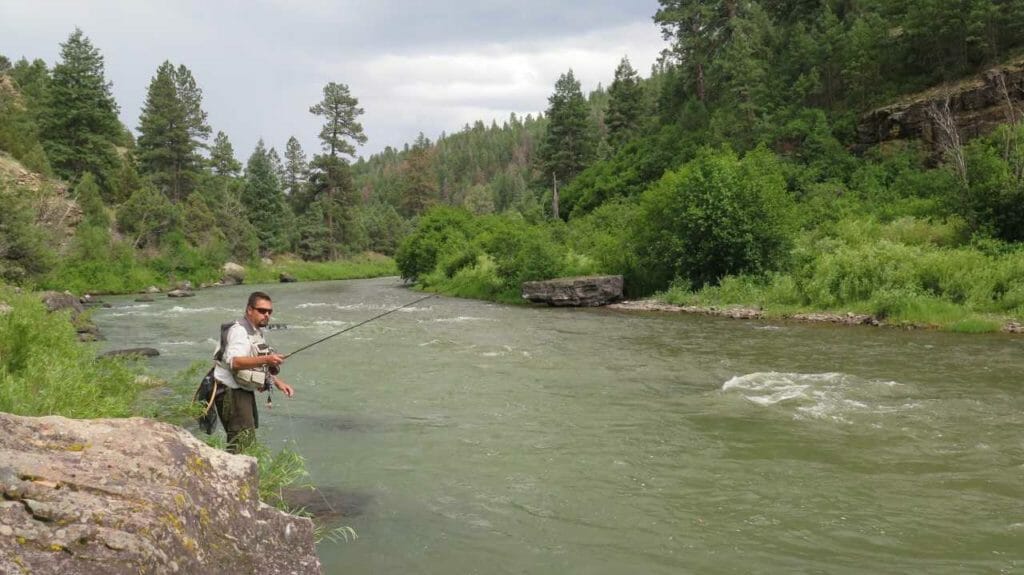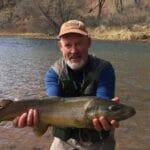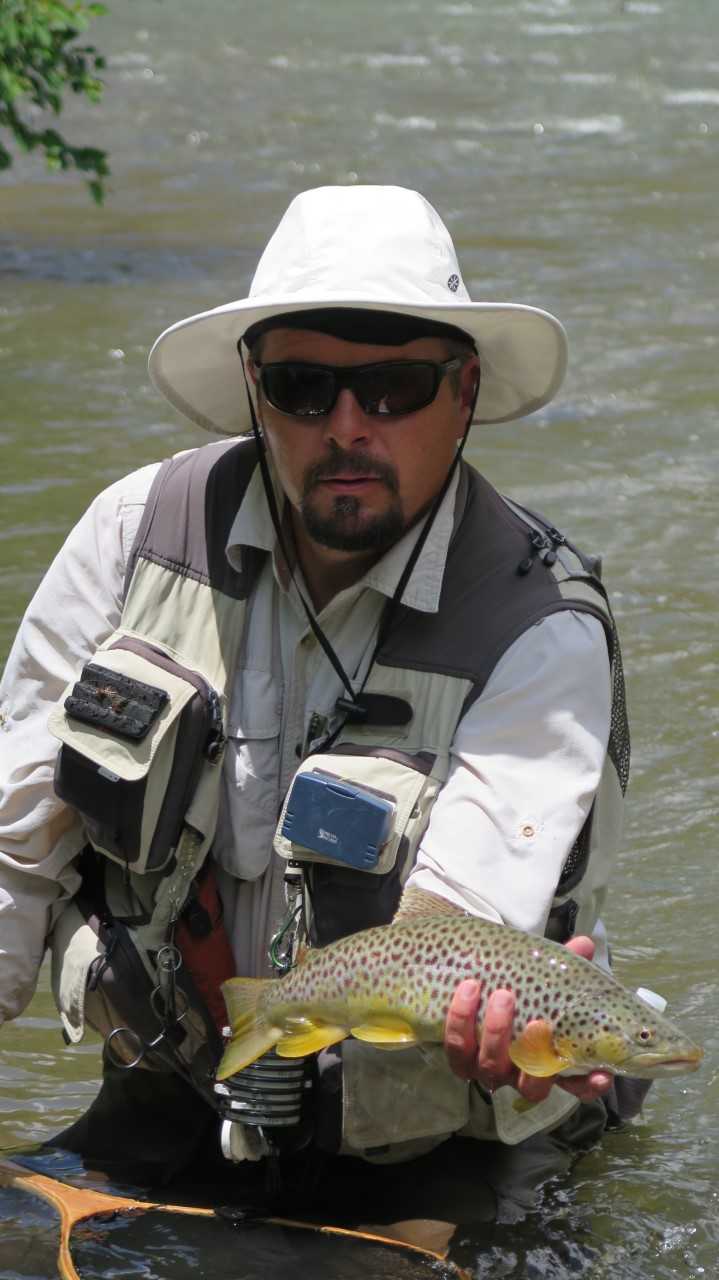After another two feet of mountain snow in mid-May, I’m starting to wonder when fishing season will begin. I know, I know, there’s fishing right now. All one has to do is make peace with less fishable holding water that’s cold and muddy. Don’t wade too deep, fish big stuff, and keep your line tight enough to feel the takes and loose enough to get to the bottom. And don’t start whining.
Given how spring has exploded across New Mexico, I fear that last rule may soon become difficult to uphold. I want the good stuff to happen now! In the mountain villages, if you try hard enough, I swear you can hear the land emitting some kind of sonic vibration. Every plant is popping flowers, dandelions, lupines in purple, fruit orchards in pink and white. The fields are as green as Ireland, and every time I think the sky can’t get any bluer, it does. Speaking of blue, there are few sights more sublime than piñon juniper country when the sagebrush and gramma roll out of bed.
If only the fishing carpet could match the terrestrial drapes, which is just the kind of thinking that can get an angler into the best kind of trouble. You drive through the country, your head on a swivel between one gorgeous view and the next. The next thing you know you’re heading to a river you think is too rough to allow you to get more than four steps off the bank because you just can’t stand it any longer.
To your surprise, the flow has stabilized, you’re able to get farther than four steps and can long-cast to that calm spot below a boulder that’s just begging to be fished. You may not have realized that the water temperature has climbed over the past several days. You don’t have to. The brown that slugs your fly tells you all you need to know.

One of these days, I expect I’ll get a call from the great Tommy B., whose propane delivery route takes him all over northern New Mexico on a daily basis. The man can smell active fish, especially in the Chama, and one of these days, he’s going to know in his bones that the time is right. The water will be a little brown, and the rainbows from El Vado will be running.
The Chama’s trout compete with its more abundant crayfish for food. They succeed against these competitors by eating them, especially when crayfish are soft and green. Standard crayfish patterns work fine if you can tie them, which I can’t. Olive wooly buggers are more my speed, with brown hackle and tails of brown and olive with a little orange mixed in. They don’t need to be fished on the bottom. In fact, trout seem to hit them more maliciously when they’re swinging through the column.
As a TU chapter member years ago, I participated in several Chama field trips with biology students from the local Tierra Amarilla High School. While sampling invertebrates, the students always turned up mind-boggling quantities of cranefly larva, an indicator that the Chama’s water is not only clean but easily capable of supporting its population of big trout, a lesson I am grateful to have learned. Thus the Poundmeister, essentially a gray woolly worm with a peacock shell, is usually the mate to my crayfish.
Though a sign of good fishing to come, spring’s soggy banks tell a happy story about the promises of the moment. I’ve learned to relish these conditions, puddles filling and spilling, rivulets pouring food into the streams. Particularly on the upper meadows of the Conejos River in southern Colorado, I feel screwed if I’m not loaded with San Juan worms. Long ones, strips of brown leather with a red Sharpie strip down the middle (I haven’t graduated to the vaunted squirmy worms yet). The wormier, the better.
If, as is commonly the case, I haven’t tied all the patterns I’m so keen on for fishing runoff in my area, I just go to the fly that so many southwestern anglers bet their houses on, a brown/black Pat’s Rubberlegs. Locally known as “the turd,” this fly could possibly be taken for a crane larva or a crayfish. But the Rubberlegs is just a stonefly, which we all know is about as American as the hamburger.
At least that’s what trout seem to think.
Toner Mitchell is TU’s water and habitat coordinator for New Mexico. He lives and works in Santa Fe.



